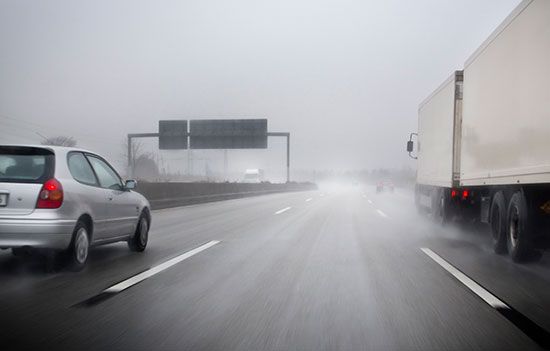How to Drive Safely in the Rain

No matter the season, rain can instantly turn even the most familiar roads into a slippery, wet mess. However, when driving in rainy conditions, there are a few essential tips that can help you stay safe and reduce the risks associated with wet roadways. In this article, we will be discussing several key points that every driver should know for a safer experience when driving in the rain.
1. Slow down and adjust your speed
Reducing your speed is one of the most crucial elements of driving safely in the rain. Wet roads increase your stopping distance significantly, meaning your car needs more time to come to a complete halt. By slowing down and maintaining a safe speed, you are reducing the risk of hydroplaning and providing yourself with extra time to react to any potential dangers on the road.
2. Maintain a safe following distance
It’s essential to keep a greater following distance from cars in front of you when driving in rainy conditions. The standard 3-second rule should be extended to at least 5-6 seconds, allowing for more reaction time if traffic suddenly slows or stops.
3. Turn on headlights but avoid high beams
To increase visibility during rainfall, always turn on your headlights so other drivers have a better chance of seeing you. However, using high beam headlights can create glare and temporarily blind other drivers due to light reflecting off raindrops, so stick to low-beam headlights.
4. Use windshield wipers and defogger effectively
Equipping your vehicle with properly functioning windshield wipers helps you maintain optimum visibility during rainstorms. Additionally, using your car’s defogger (or simply setting the air conditioning system to defrost mode) helps clear up foggy windows and improve overall visibility inside and outside your car.
5. Avoid cruise control
Even though cruise control might seem like an excellent feature for long drives or maintaining consistent speeds, avoid using it when driving in the rain. Without cruise control, you have better control over your vehicle’s speed and can swiftly respond to changes in road conditions, such as puddles or sudden traffic slowdowns.
6. Watch out for standing water
Heavy rainfall can cause puddles and sometimes even flooding on the roads. Driving into standing water can result in hydroplaning, where your car loses contact with the road surface and effectively “floats” on the water. If you encounter standing water, slow down, maintain a steady speed and avoid sudden maneuvers.
7. Keep an eye on tire condition
Ensuring your tires are in good condition with adequate tread depth contributes to traction and vehicle stability during rainy drives. Regularly check tire pressure as well, as underinflated tires are more prone to hydroplaning.
8. Stay calm in case of skidding or hydroplaning
If you feel your car losing grip on the road or starting to slide (skid), avoid panicking and steer gently in the direction of the slide while easing off the gas pedal until you regain control. If hydroplaning occurs, gradually lift your foot off the accelerator and continue steering gently towards your intended direction without applying brakes.
By incorporating these simple but effective tips into our driving habits when it’s raining, we can significantly reduce our chances of being involved in a weather-related accident, ensuring not only our safety but that of other road users as well. Safe driving!






